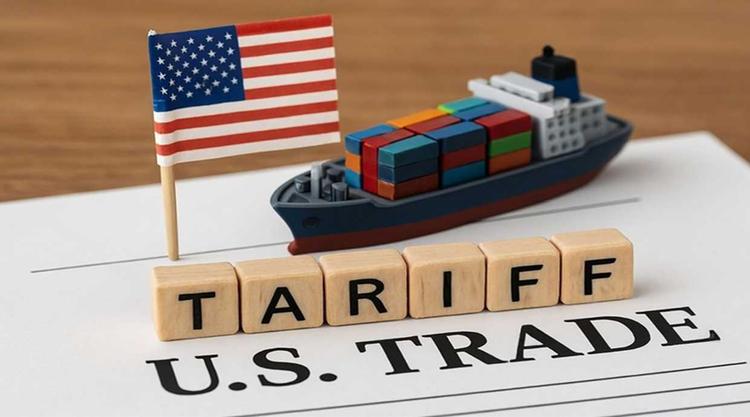How Tariffs Are Reshaping U.S. eCommerce in 2025 and What Smart Brands Are Doing
Sector: Digital Commerce
Author: Nisarg Mehta
Date Published: 10/13/2025

Contents
The 2025 wave of U.S. import tariffs has done more than shake global trade , it’s changing how eCommerce brands price, source, and deliver products.
As an experienced eCommerce service partner, we see firsthand how brands are feeling the squeeze and how the right digital strategy can turn tariff turbulence into a competitive edge.
The Quick Rundown on Tariffs
Recent U.S. trade policy updates have:
- Increased tariffs on major import categories, especially from China.
- Tightened the de-minimis rule for low-value parcels, closing loopholes that once allowed small shipments to avoid duties.
For online retailers, that means:
- Higher landed costs per product
- More complex customs and compliance
- Reduced pricing flexibility
Margins are shrinking, and speed to market is under pressure and it is also impacting B2B players.
The B2B Ripple Effect
Industrial and manufacturing eCommerce : from construction equipment dealers to OEM parts suppliers are seeing steep cost increases. Tariffs on metals, machinery components, and electronics ripple through entire supply chains, forcing B2B sellers to rethink pricing, lead times, and contract terms.
Many B2B platforms are now adopting dynamic quoting tools and real-time cost APIs to stay profitable and transparent with buyers.
Industries Taking the Hardest Hit
The tariff shock isn’t evenly distributed. Some industries are feeling it more than others:

Counter-Strategies for eCommerce Brands
Smart brands are leaning into data, automation, and testing to offset tariff pressure.
A/B Test Your Pricing
Run structured A/B tests to find how much of a price adjustment your customers will tolerate.
Data-driven pricing helps protect margins while maintaining conversion rates.
Recalculate Landed Costs & Margins
Use digital dashboards or ERP integrations to simulate different tariff scenarios.
Identify high-risk SKUs early and plan sourcing or pricing adjustments proactively.
Diversify & Nearshore Suppliers
Reduce reliance on single markets by sourcing from Vietnam, India, or Mexico.
For fast-moving items, nearshore fulfillment cuts both tariffs and shipping delays.
Automate Customs & Compliance
AI-powered HS classification and automated duty calculators eliminate manual bottlenecks, essential for B2B importers managing complex part catalogs.
Enhance Analytics & Forecasting
Integrate real-time tariff data into your analytics stack. Predictive insights help teams plan purchasing cycles and inventory strategies before rate hikes land.
Turning Tariff Disruption Into Digital Growth
Tariffs are pushing eCommerce both B2C and B2B , toward smarter, data-driven operations.
The brands that experiment, automate, and diversify will turn today’s cost challenges into long-term competitive advantages.
At Techtic, we help eCommerce businesses build resilient, scalable systems. From AI-driven pricing engines to real-time cost analytics and supply-chain dashboards , ensuring you thrive even under shifting trade conditions.
Ready to Future-Proof Your eCommerce Stack? Let’s help your brand stay agile amid global tariff turbulence.Schedule a free strategy consultation to explore how we can optimize your pricing, automate operations, and strengthen your sourcing network.
FAQs
Q: How are the 2025 U.S. import tariffs affecting eCommerce businesses?
The 2025 tariffs are increasing costs on key product categories like electronics, apparel, and furniture, especially those sourced from China. eCommerce brands are facing higher landed costs, complex customs processes, and shrinking profit margins. Both B2C and B2B sellers are now rethinking sourcing strategies and pricing models to stay competitive.
Q: Why are small and mid-size eCommerce brands hit hardest by new tariffs?
Smaller brands typically rely on single-country suppliers and low-margin product lines. With tighter de-minimis rules and rising import duties, these businesses lose their pricing flexibility. Without advanced forecasting or diversified sourcing, they’re more exposed to cost shocks compared to enterprise retailers.
Q: Which industries are facing the most tariff pressure in 2025?
Industries most affected include:
- Fast Fashion & Apparel: Rising costs disrupt ultra-low pricing models.
- Consumer Electronics: Component and battery tariffs squeeze margins.
- Furniture & Home Goods: Section 301 tariffs raise import prices.
- Industrial Equipment: Tariffs on steel, aluminum, and mechanical parts hit B2B sellers hardest.
Q: How can eCommerce brands turn tariff disruption into growth opportunities?
Tariffs, while challenging, are pushing eCommerce toward smarter operations. The brands winning in 2025 are those investing in:
- Dynamic pricing engines
- Predictive analytics dashboards
- Supplier diversification
- Automated compliance workflows
By embracing digital transformation now, brands can transform tariff pressure into a long-term competitive advantage.



